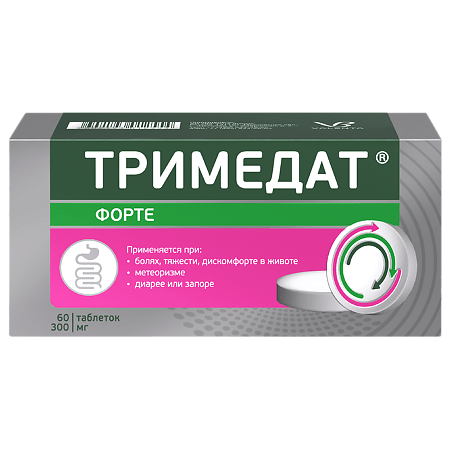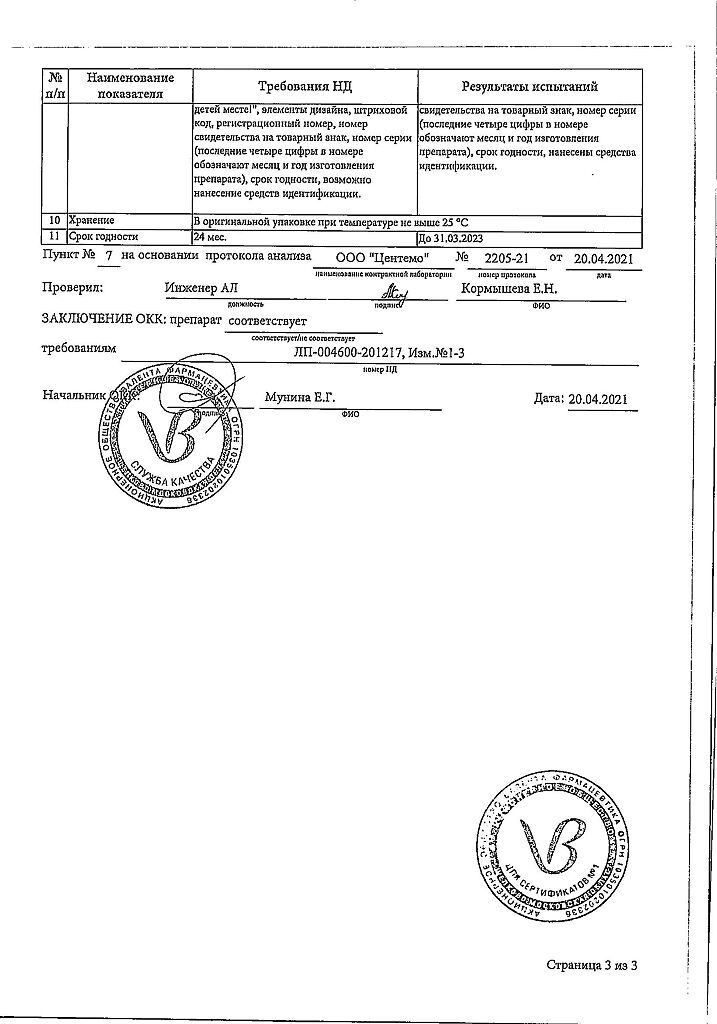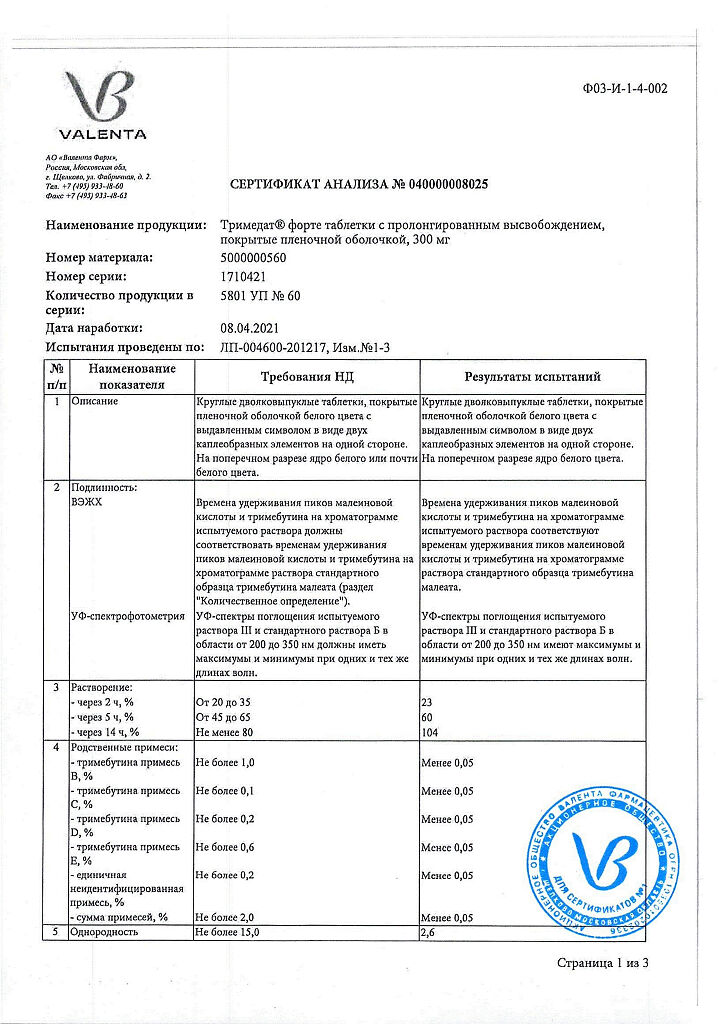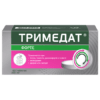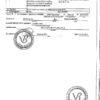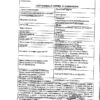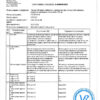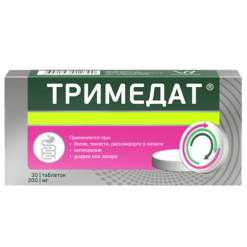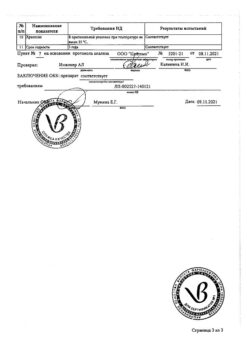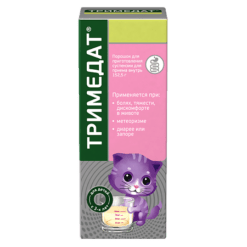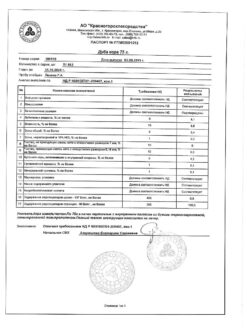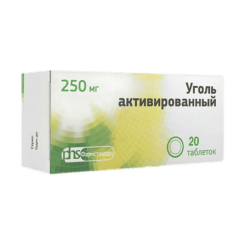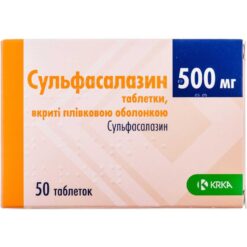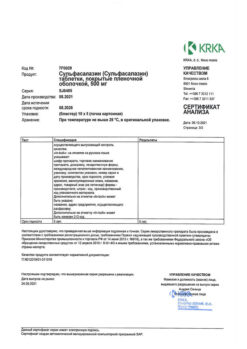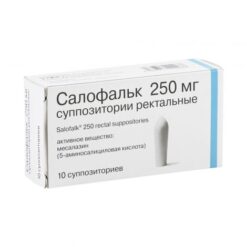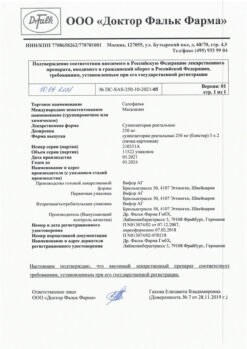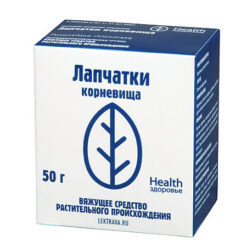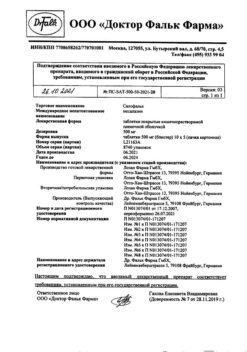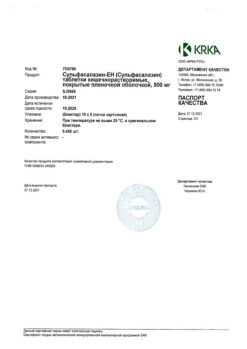No products in the cart.
Trimedat Forte, 300 mg 60 pcs
€52.50 €43.75
Description
Antispasmodic agent
ATX code: A03A05
Pharmacodynamics
Trimebutine acts on the encephalinergic system of the intestine and regulates its peristalsis. Acting on peripheral δ-, μ- and k receptors, including those located directly on the smooth muscles throughout the gastrointestinal tract (GIT), it regulates motility without affecting the central nervous system.
Trimebutin thus restores normal physiological activity of the intestinal musculature in various GI diseases associated with motility disorders.
Normalizing visceral sensitivity, trimebutine provides analgesic effect in abdominal pain syndrome.
Pharmacokinetics
Trimebutine is rapidly absorbed from the gastrointestinal tract after oral administration. The degree of binding to plasma proteins is about 5%. Trimebutine slightly penetrates through the placental barrier. Trimebutine is biotransformed in liver and excreted with urine mainly as metabolites.
In a study in healthy volunteers with a single administration of Trimedat® forte, the pharmacokinetic parameters of the active metabolite of trimebutine, 2-methylamino-2-phenylbutyl-3,4,5-trimethoxybenzoate (desmethyltrimebutine) were: maximum concentration (Cmax) of 441.45±252.99 ng/mL; time to reach it (Tmax) of 2.20±1.01 hours; mean retention time (MRT) of 17.12±3.14 hours; half-life (T1/2) – 12.52±4.54 hours; volume of distribution (Vd) – 1279.72±1108.53 l, total clearance (CLt) – 66.51±34.34 l/h.
Indications
Indications
Symptomatic treatment of pain, cramps and discomfort in the abdomen, sensation of bloating (flatulence), intestinal motor disorders with changes in stool frequency (diarrhea or constipation), dyspepsia, heartburn, belching, nausea, vomiting associated with functional diseases of the gastrointestinal tract and biliary tract (non-erosive form of gastroesophageal reflux disease; cholelithiasis; dysfunction biliary tract; irritable bowel syndrome; sphincter of Oddi dysfunction, postcholecystectomy syndrome).
Postoperative paralytic ileus.
Pharmacological effect
Pharmacological effect
Antispasmodic
ATX code: A03AA05
Pharmacodynamics
Trimebutine, acting on the enkephalinergic system of the intestine, is a regulator of its peristalsis. Acting on peripheral δ-, μ- and k receptors, including those located directly on smooth muscles throughout the gastrointestinal tract (GIT), it regulates motility without affecting the central nervous system.
Thus, trimebutine restores the normal physiological activity of the intestinal muscles in various gastrointestinal diseases associated with motility disorders.
By normalizing visceral sensitivity, trimebutine provides an analgesic effect for abdominal pain syndrome.
Pharmacokinetics
After oral administration, trimebutine is rapidly absorbed from the gastrointestinal tract. The degree of binding to plasma proteins is about 5%. Trimebutine penetrates the placental barrier to a small extent. Trimebutine is biotransformed in the liver and excreted in the urine mainly in the form of metabolites.
In a study in healthy volunteers with a single dose of Trimedat® forte, the values of the pharmacokinetic parameters of the active metabolite of trimebutine – 2-methylamino-2-phenylbutyl-3,4,5-trimethoxybenzoate (desmethyl trimebutine) were: maximum concentration (Cmax) – 441.45±252.99 ng/ml; time to achieve it (Tmax) – 2.20±1.01 hours; mean retention time (MRT) – 17.12±3.14 hours; half-life (T1/2) – 12.52±4.54 hours; volume of distribution (Vd) – 1279.72±1108.53 l, total clearance (CLt) – 66.51±34.34 l/hour.
Special instructions
Special instructions
To prevent relapse of irritable bowel syndrome after a course of treatment during the period of remission, it is recommended to continue taking the drug at a dose of 300 mg per day for 12 weeks.
Active ingredient
Active ingredient
Trimebutine
Composition
Composition
One tablet contains:
active ingredient:
trimebutine maleate – 300 mg;
excipients:
microcrystalline cellulose,
povidone (K 25),
hypromellose,
magnesium stearate;
shell composition: Opadry II 85F18422: partially hydrolyzed polyvinyl alcohol, macrogol-3350, titanium dioxide E 171, talc.
Pregnancy
Pregnancy
Experimental studies have not revealed any evidence of teratogenicity or embryotoxicity of the drug. However, due to the lack of necessary clinical data, the use of Trimedat® forte during pregnancy is contraindicated.
It is not recommended to prescribe Trimedat® forte during lactation,
due to the lack of reliable clinical data confirming
safety of using the drug during this period. If necessary, use
of the drug during lactation, breastfeeding should be discontinued
feeding.
Contraindications
Contraindications
Hypersensitivity to the components included in the drug.
Pregnancy.
Children up to 12 years of age (for this dosage form).
Side Effects
Side Effects
From the digestive system: dry mouth, unpleasant taste, diarrhea, dyspepsia, nausea, constipation.
From the nervous system: drowsiness, fatigue, dizziness, headache, anxiety.
Allergic reactions: skin rash.
Other: menstrual irregularities, painful enlargement of the mammary glands, delay
urine.
Interaction
Interaction
Drug interactions with Trimedat®
forte is not described.
Overdose
Overdose
Cases of overdose of the drug Trimedat®
forte has not yet been registered.
Treatment: discontinuation of the drug, gastric lavage, administration of activated charcoal, symptomatic therapy. There are no specific antidotes.
Storage conditions
Storage conditions
In original packaging at a temperature not exceeding 25 oC.
Keep out of the reach of children.
Shelf life
Shelf life
2 years. Do not use after the expiration date stated on the package.
Manufacturer
Manufacturer
Valenta Pharm JSC, Russia
Additional information
| Shelf life | 2 years. Do not use after the expiration date stated on the package. |
|---|---|
| Conditions of storage | In the original package at a temperature not exceeding 25 oC. Store out of the reach of children. |
| Manufacturer | Valenta Farm, Russia |
| Medication form | sustained release tablets |
| Brand | Valenta Farm |
Other forms…
Related products
Buy Trimedat Forte, 300 mg 60 pcs with delivery to USA, UK, Europe and over 120 other countries.

